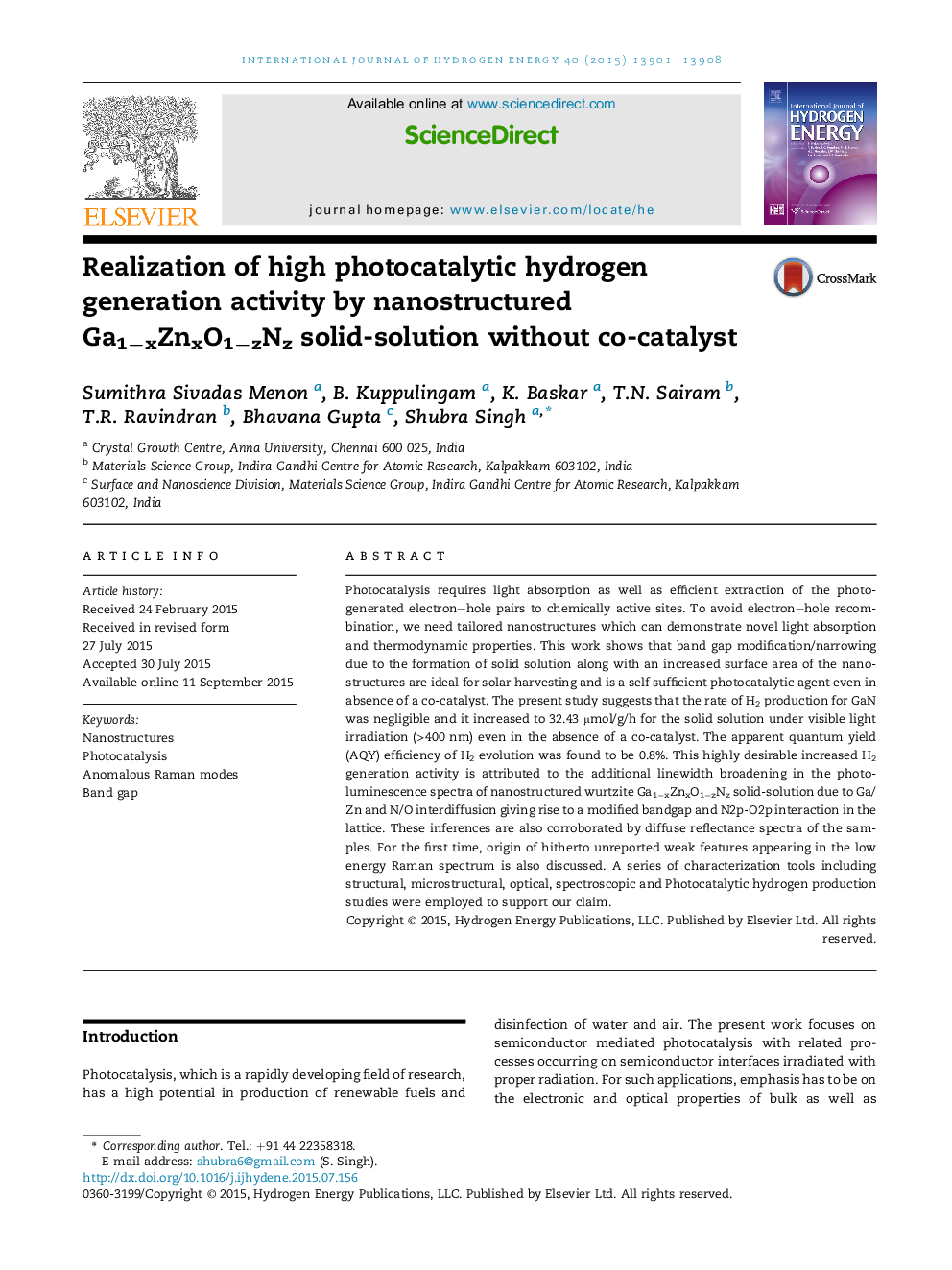| Article ID | Journal | Published Year | Pages | File Type |
|---|---|---|---|---|
| 1270447 | International Journal of Hydrogen Energy | 2015 | 8 Pages |
•Apparent quantum efficiency (AQY) of 0.8% for GaN-ZnO solid solution.•High rate of H2 production for visible irradiation (>400 nm) without a co-catalyst.•Additional linewidth broadening observed in PL spectra indicates reduced band gap.•Origin of hitherto unreported weak features at the low energy Raman spectrum.
Photocatalysis requires light absorption as well as efficient extraction of the photogenerated electron–hole pairs to chemically active sites. To avoid electron–hole recombination, we need tailored nanostructures which can demonstrate novel light absorption and thermodynamic properties. This work shows that band gap modification/narrowing due to the formation of solid solution along with an increased surface area of the nanostructures are ideal for solar harvesting and is a self sufficient photocatalytic agent even in absence of a co-catalyst. The present study suggests that the rate of H2 production for GaN was negligible and it increased to 32.43 μmol/g/h for the solid solution under visible light irradiation (>400 nm) even in the absence of a co-catalyst. The apparent quantum yield (AQY) efficiency of H2 evolution was found to be 0.8%. This highly desirable increased H2 generation activity is attributed to the additional linewidth broadening in the photoluminescence spectra of nanostructured wurtzite Ga1−xZnxO1−zNz solid-solution due to Ga/Zn and N/O interdiffusion giving rise to a modified bandgap and N2p-O2p interaction in the lattice. These inferences are also corroborated by diffuse reflectance spectra of the samples. For the first time, origin of hitherto unreported weak features appearing in the low energy Raman spectrum is also discussed. A series of characterization tools including structural, microstructural, optical, spectroscopic and Photocatalytic hydrogen production studies were employed to support our claim.
